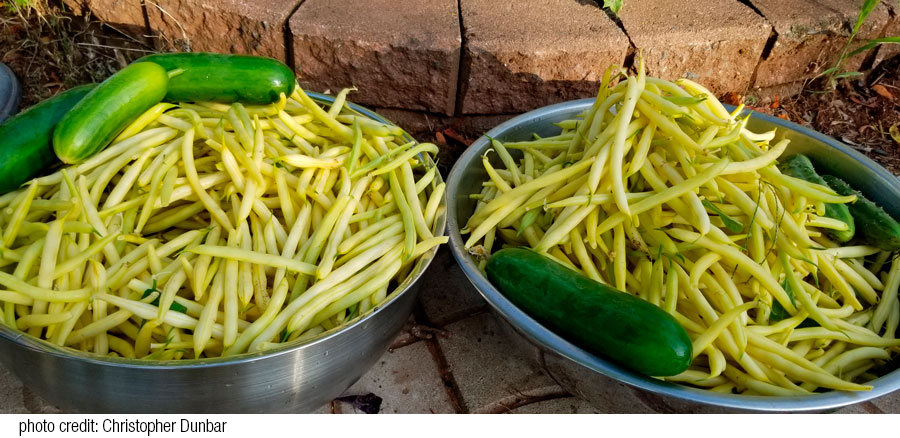Preserving your fall crops
One of the really enjoyable parts of having a garden for me is preserving all of the fruits and veggies. September is a month of ample harvest so preserving is an option to handle all the extras. There is no smell quite like the tangy spicy aroma of a pot of fresh pickles simmering on a wood stove.
There are many ways to preserve your produce. The easiest way is to simply freeze them. I find that berries such as raspberries, strawberries, and blueberries keep very well if washed and placed on a baking sheet to freeze. The frozen berries are then bagged and labelled. Individual portions can be removed as the berries are loose in the bag. The skin on the berries acts as a natural barrier to moisture loss in the freezer. In our house, we make smoothies in the winter using frozen berries. They give us fond memories of the summer when the snow is blowing and provide excellent nutrition.
Some veggies, such as beans, broccoli, or corn will need to be blanched before freezing. This involves a dip in boiling water for a few minutes and breaks down some of the enzymes that can cause the texture to change. Tomatoes can be frozen whole, however I find they preserve better if cooked and peeled first.
Many tuber and root crops can be preserved in a root cellar. I have written a few words on that in a past article and it can be found on the Salty website if you want to check it out.
Cabbage can be fermented and made into delicious sauerkraut. Speaking of fermentation, in addition to wine and apple cider, the juice of most tree fruits can be preserved by fermentation. Different juices can be combined to make a more interesting taste.
Of course, many berries can be made into jams, marmalades, and jellies. So many choices!
Lastly, pickling is a commonly-used option. Cucumbers, onions, zucchini, beets, beans, carrots, and other types of vegetables can be pickled. When pickling, it is important to follow the recipes closely to avoid spoilage. Acidity, sweetness, and saltiness are used as part of the process and must be in the correct levels.
Just like with other parts of the gardening experience, this time of year can be a great way to connect with other gardeners and exchange tips on preserving techniques. You can also do some trading to see if you like the recipes used by others.
Well, I guess I will go and pick some tomatoes, onions, and cilantro and begin a batch of tangy salsa. Maybe I will get an apple out of the orchard on the way.
Stay safe, happy gardening.
- THE EDIBLE GARDEN - June 2, 2020
- THE EDIBLE GARDEN - March 1, 2020
- THE EDIBLE GARDEN - February 1, 2020
- THE EDIBLE GARDEN - January 1, 2020
- THE EDIBLE GARDEN - December 2, 2019
- THE EDIBLE GARDEN - November 1, 2019
- THE EDIBLE GARDEN - October 1, 2019
- THE EDIBLE GARDEN - September 1, 2019
- THE EDIBLE GARDEN - August 1, 2019
- THE EDIBLE GARDEN - July 1, 2019


